Recently, my attention has been drawn to the latest practice that is now common among ladies and fat people in particular or those with bulging stomach or abdominal fats. It is no doubt that, looking good is very important. But the big question is, at the what detriment, your health? Yeah, your health!
Writing this article, I intend to disprove and debunk a lot of misconception about the use of waist trainers being currently used by most ladies here. The article will go in detail to explain whether waist trainers help burn visceral fats or not and also explain if it has any relationship at all with weight reduction in women.
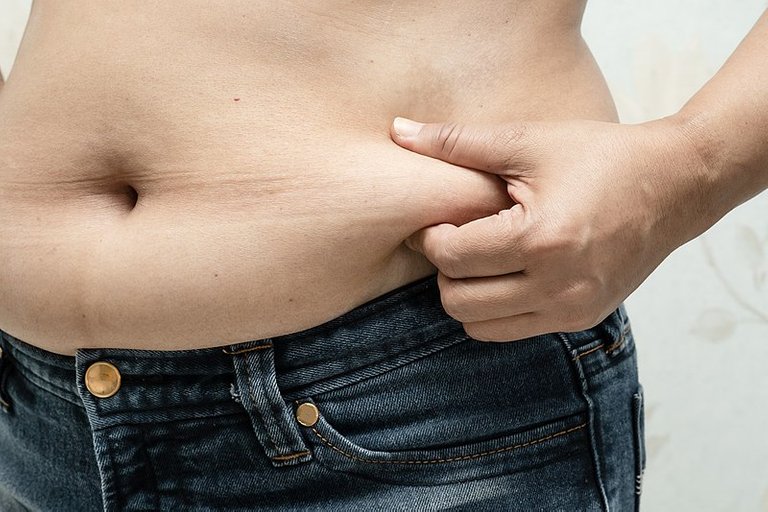
Overweight asian woman show and use hand to squeeze fat belly
After reading this article, you want to have a rethink before putting on that waist trainer again. Humans add in weight mainly based the continuous synthesis and deposition of fats in adipose tissues and various parts of the body and secondly, through increased bone density.
It is possible for a slim man to weigh heavier than a fat woman. Reason being that, sometimes, it is not only fat that contribute to weight gain but also the deposition of minerals in bones. A slim male individual can weigh heavier than a very fat woman because in males, bone density most times contribute to weight gain.
Since our focus is on women, we won't need worrying over bone formation and metabolism. Our focus is on females and to have a better understanding of how fats are synthesized or metabolized in humans, let's critically discuss their metabolism.
Reading this article might be a little bit tough, but this is as simple as it can get. Fear not regardless, atleast you have a lot to learn here, enjoy!
Basic facts about fats metabolism in humans
Fats stored in humans are mainly of two sources - from the action of enzymes in the body and from diets we eat. The major storage form of fats in we humans and most animals is Triglycerides.
When we eat fatty foods, as they are digested, they are broken down into fatty acids which then allows them to be absorbed into the blood and then converted and stored in the body tissues as triglycerides through an enzymatic process.
As we chew food, no matter the nature, the very first enzymes that will mix it is the salivary amylase. It is the most important enzymes that initiates all digestion process in humans and it is produced by the salivary glands. For fatty foods, lingual lipase produced by the salivary gland in the mouth is the very first to act.
Lingual lipase essentially initiates the fat emulsification (process of making fats more soluble for easy digestion and absorption in the intestines. In essence, fat digestion typically begins in the mouth.
As the food gets to the stomach, it is acted upon by the hydrochloric acid, pepsin, gastric lipase and amylase. All these enzymes together convert the food to a paste like semi fluid called chyme. The next point of contact of this substance is the duedenom (the first part of the small intestine). Once present in the duodenum, the acidic nature of this substance causes the release of another intestinal hormone known as secretin.
This enzyme does the job of stimulating the production and secretion of a very important chemical from the liver known as bile. This chemical is stored in the gall bladder and upon stimulation by the presence of the acidic chyme. Bile salts are released to mainly further do the real job of fat emulsification and converting them into tiny liquid crystals called fat emulsions.
Presence of chyme in the duodenum doesn't only trigger fat emulsification process, it also stimulates the exocrine part of the pancreas to release chemicals like bicarbonate, pancreatic enzymes like lipase. The essence of the bicarbonate is to neutralize the acidic of the chyme and make it alkaline in nature, since the intestines is expected to be maintained at basic pH.
Once the emulsion has been formed, the pancreatic lipase which is the chief enzyme for fat degradation can then hydrolyse the fats into into monoglycerides, fatty acids and cholesterol. Biles salts (cholate and chenodeoxycholate) play very significant role in fat absorption by helping to solubilized the fats (i.e facilitate their solubility in hydrophilic environment, the blood plasma).
The emulsification allows the fats to be dissolved and effectively transported in the blood by various biological transport molecules. Remember fat molecules are not water soluble and as such, they mkmust require a unique medium transportation in water soluble environment. Fatty acids transport for example are initiated by Fatty acid transfer proteins (FATPs). They are membrane proteins, meaning, you find them on the membrane of most organs and tissues.
It will interest you to know that, one of the reasons why obsessed individuals usually suffer type 2 diabetes caused by the insensitivity of the pancreatic B cells receptor which produce insulin is because of fatty acids transport proteins and specifically, fatty acids transport protein 1 and 4 (FATP 1 & 4) are the ones implicated.
Overwhelming fats deposits makes them inefficient in the uptake of fatty acids from tissues and consequently, this can cloud the insulin receptor sensitivity to insulin. Since insulin cannot bind, the uptake of glucose is hampered and as a results, the blood sugar levels in the blood overtime sky rockets, leading to type 2 diabetes.
Cholesterol on the other hand is transported by lipoproteins (made up of fats and proteins). They vary depending on the type of cholesterol they carry. The two major type are the High density lipoprotein (the good cholesterol) and Low deny cholesterol (the bad cholesterol) but others that also play role in the body include the intermediate density lipoprotein (IDL), Very low density lipoprotein (VLDL) and chylomicrons.
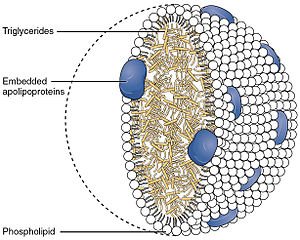
Chylomicrons structure
The chylomicrons is of interest in our discussion because it helps in the transportation of the lipids to tissues that need them for metabolic functions. It mainly consist of majorly triglycerides and then other contents like phospholipids, cholesterol and proteins.
In the circulation, the triglycerides carried in chylomicrons are metabolized in muscle and adipose tissue by lipoprotein lipase releasing free fatty acids, which are subsequently metabolized by muscle and adipose tissue, and chylomicron remnants are formed. Chylomicron remnants are then taken up by the liver.
The major job of chylomicrons is to transport its contents to peripheral tissues and because they have high triglycerides which is the major storage form of fats in the body, it is very indicated in adipose tissue formation and obesity in humans.
Probably you had wondered earlier as to why HDL and LDL were referred to as good and bad cholesterol respectively earlier on, I guess that might have skipped your mind, well, here is why. Both lipoprotein have role to play in the formation and inhibition of arteriosclerosis in the body system.
HDL mostly blocks the formation of atherosclerosis because of its ability to reverse transport cholesterol that is left in chylomicrons remnant (gotten when the triglycerides is removed by peripheral tissues from chylomicrons) back to the liver and other important organs for use.
So instead of these cholesterol accumulating in tissues and forming plagues especially in the blood vessels, with the help of HDL, they transported back out to the liver for breakdown into other substances like bile acids and production of enzymes needed for digestion and hormones (when they are transported to adrenal glands, ovary and the testes).

Full spectrum of HDL protective functions
HDL naturally has antioxidant function and as such, it prevents the oxidation of LDL which promotes atherosclerosis. This singular function further prevents any formation of immunogenic and inflammatory reactions which can end up producing macrophage foam cells. Because of all the above functions of HDL, it is regarded as the good cholesterol.
On the other hand, the case is different for LDL which is notorious in transporting majority of the cholesterol in the body. In essence, it is highly rich in cholesterol. LDL from its, is able to transport cholesterol to smaller areas of the body, including the blood vessels. Though it is also important and needed for full body functionality since it transport the cholesterol to smaller areas where they are also needed.
Where the problem is, is that, when in excess, they deposit most of these cholesterol in smaller areas of the body. Its notorious effects is seen in blood vessels (the capillaries, veins, arteries). In the course of transporting the cholesterol, they are gradually deposited along the wall of the blood vessels. Their continuous deposition results to the formation of atherosclerotic plagues.
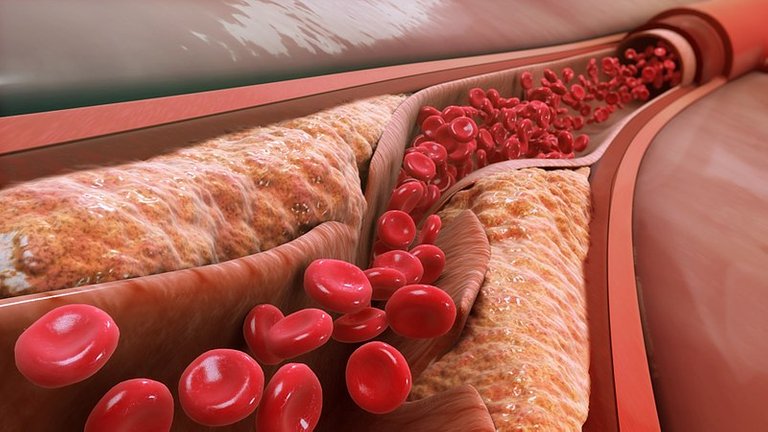
Effects of LDL on blood vessels
This plague causes the narrowing of the blood vessels and up to a point where they can occlude blood flow to vital organs as tissues. Depending on the blood vessels they block, the condition ca prove fatal if is a blood vessel that delivers blood to the brain or heart. In such case, the patient can come down with stroke or heart attack.
The LDL particles have low binding affinity to their LDL receptors and this is is why they stay longer in circulation. This gives them ample time to effectively bind and be attached strongly to the intra-arterial wall of blood vessels. So since they are highly rich in cholesterol, if these cholesterol are in excess, they simply attach to the intra-arterial wall and form plague.
This is why it is important we watch what we eat and as much as possible, reduce cholesterol intake. For younger people, cholesterol is still much used up because, most are used up in the production of androgens and sex hormones. So, there won't be much left in the circulation.
The case is different in adults and older people who to a greater extent are experiencing decline in sex hormones usage. They tend to have more of these unused cholesterol in circulation if they consume diets rich in calories and as such, it will favour atherosclerotic plague formation.
Investigations aimed at lipids or fats measurements in the body simply indirectly takes into account HDL, LDL, VLDL and cholesterol. When you have a result with high VLDL, high cholesterol or triglycerides and high LDL and low HDL, it is an indication of potential health problem that can lead to stroke or heart attack. This is the simple logic and science behind the test done to measure total total cholesterol in the human body.
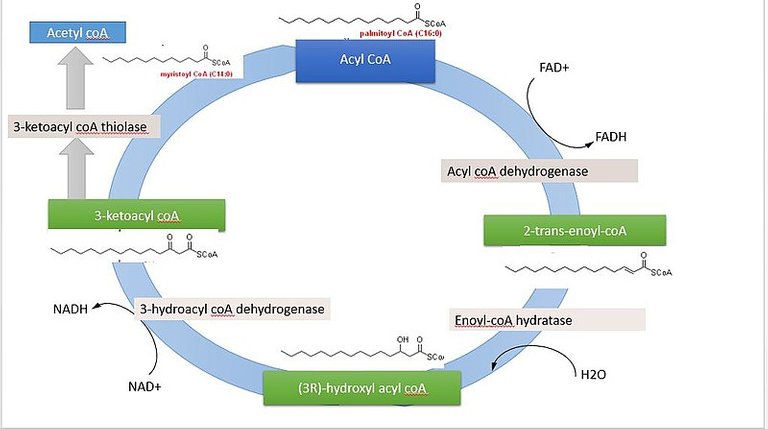
Beta oxidation of fatty acid - palmitic acid to acetyl CoA, a precursor for cholesterol biosynthesis
Most of the cholesterol in the body circulation are products of biosynthesis invivo while the remaining are gotten directly from the food we eat. When we continuously ingest diets rich in fats and its precursor (Acetyl CoA) for cholesterol synthesis in the body, over time its concentration in the body increases. The excess are stored are triglycerides in adipose tissue and in the liver.
Biosynthesis of cholesterol generally takes place in the endoplasmic reticulum of hepatic cells and begins with acetyl- CoA, which is mainly derived from an oxidation reaction in the mitochondria. However, acetyl-CoA can also be derived from the cytoplasmic oxidation of ethanol by acetyl-CoA synthetase. Acetyl-CoA and acetoacetyl-CoA are converted to 3-hydroxy- 3-methylglutaryl-CoA (HMG-CoA) by HMG-CoA synthase.
Adipose tissues are simply loose fats cells and they play role in fat storage. One of the remarkable thing about this cells is that, the moment they reach their storage capacity threshold, they replicate and produce more adipocytes that will enable the store more fats cells.
There are natural mechanism that regulate the Biosynthesis of cholesterol and one of it is insulin in addition to high cholesterol level (auto inhibition). The more we eat and produce glucose, insulin is released to enable the uptake of the glucose. Excess glucose are broken down through glycolysis which then produces acetyl CoA.
This acetyl CoA can then be used to produce fats that are stored and can be used up during fasting. When we fast, fats are broken down to produce energy we need for body functions. This goes to say that, fasting helps reduce fats in the body.
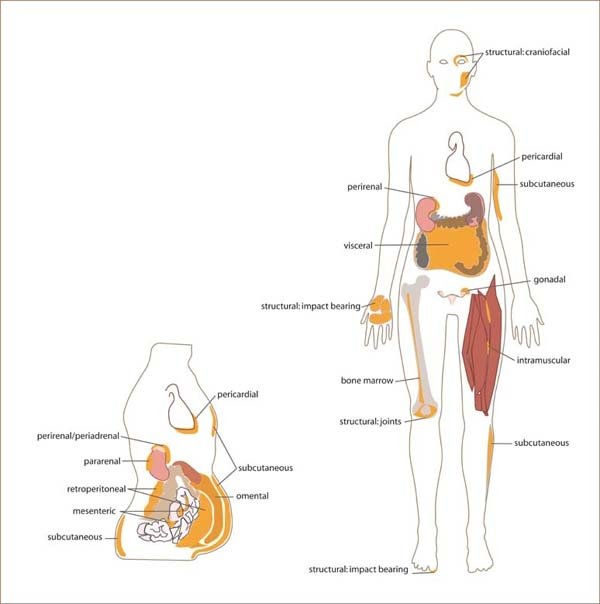
Fat is distributed widely throughout the body and has different functions and growth properties depending on its location. For example, adipose surrounding sex organs can secrete sex hormones, subcutaneous fat is responsive to energy storage needs and structural fat pads on the feet have not been shown to secrete any factors of interest, nor do they show significant changes in growth. Excessive visceral or gut fat, composed of retroperitoneal fat (“behind the peritoneum”), omental fat (adipose in a sheet of connective tissue hanging as a flap originating at the stomach and draping the intestines)
Most of the areas where you have more fats deposition is usually around the visceral organs. Females naturally do not burn fats as fat as in men and one of the reasons for this is that, oestrogen in females reduces their ability to burn fats and ad a result, they continue to accumulate in the body.
Visceral body fat, also known as 'hidden' fat, is fat stored deep inside the belly, wrapped around the organs, including the liver and intestines. It makes up about one tenth of all the fat stored in the body. Most fat is stored underneath the skin and is known as subcutaneous fat. Visceral fat makes the belly stick out or gives a person an 'apple' shape. It also produces chemicals and hormones that can be toxic to the body
The unpleasant shape visceral fats confer individuals, females in particular is the reason why most females use the waist trainers but this wear actually has zero effects on fat reduction. Mere reading of the above mechanism of fat reduction and biosynthesis simply shows that fats are not reduced by compression using wears.
Drugs like statins can stop cholesterol biosynthesis by inhibiting the enzyme HMGCoA synthetase responsible for the production of cholesterol. This is the simple mechanism of cholesterol reduction when you buy drugs for treatment of hypercholesterolemia (increase cholesterol in the body system)
Some phytochemicals in herb and green tea are able to help individuals burn fats. Most green teas have bioactive molecules that help in the degradation of visceral fats. Even exercises help increase the basal metabolic rate of the body system and in the process, helps to degrade fats.
Fat degradation is mainly biochemical and compression by any means aimed at reduction it is only fallacious. Wearing waist trainers only but complicate the health condition of the wearer. These waist trainer exert great pressure on the abdominal region. Not only that, they compress and increase pressure s in various organs like the kidney and liver.
When you squeeze into a corset, these organs have to adapt, and they end up being pushed into unnatural positions where they are too crowded to function well. In the short-term, this likely just feels very uncomfortable, but long-term waist training can permanently harm organs, disfigure your body, or even fracture your ribs.
Waist trainers do not helo in burning of visceral or belly fats, they just only hold them together for the time being. Once you remove them, the visceral fats return back to original size and shape.
Infact, research has shown that it can even hinder effective breathing in individuals.
Waist training can deprive your body of oxygen, reducing lung capacity by an estimated 30-60% while you’re wearing the corset. At best, this can result in low energy and discomfort, but scarier consequences—passing out, fluid buildup in the lungs
Preferably go for exercises use natural diet that can help reduce fats rather than wear waist trainers. The health implication associated with the use of waist trainers can be life threatening if not stooped.
Remember, fats can only be burn through catabolic processes in the body. The idea that waste trainers help in fat reduction is highly fallacious and untrue. It has no scientific bases. They only but give you a false psychological perception that you are loosing belly fats since you probably won't be able to feed well as a result of the abdominal region compression.
Changing your life style and diets can help you burn fats. Avoid foods rich in calories and fats. Stay healthy. Burning of belly fats using waist trainers is a sham!
Until I come your way again!
References
•How Cells Obtain Energy from Food
•Cholesterol Biosynthesis
•Oxidation of LDL and its clinical implication
•Introduction to Lipids and Lipoproteins
•4 Reasons to Throw Your Waist Trainer in the Trash
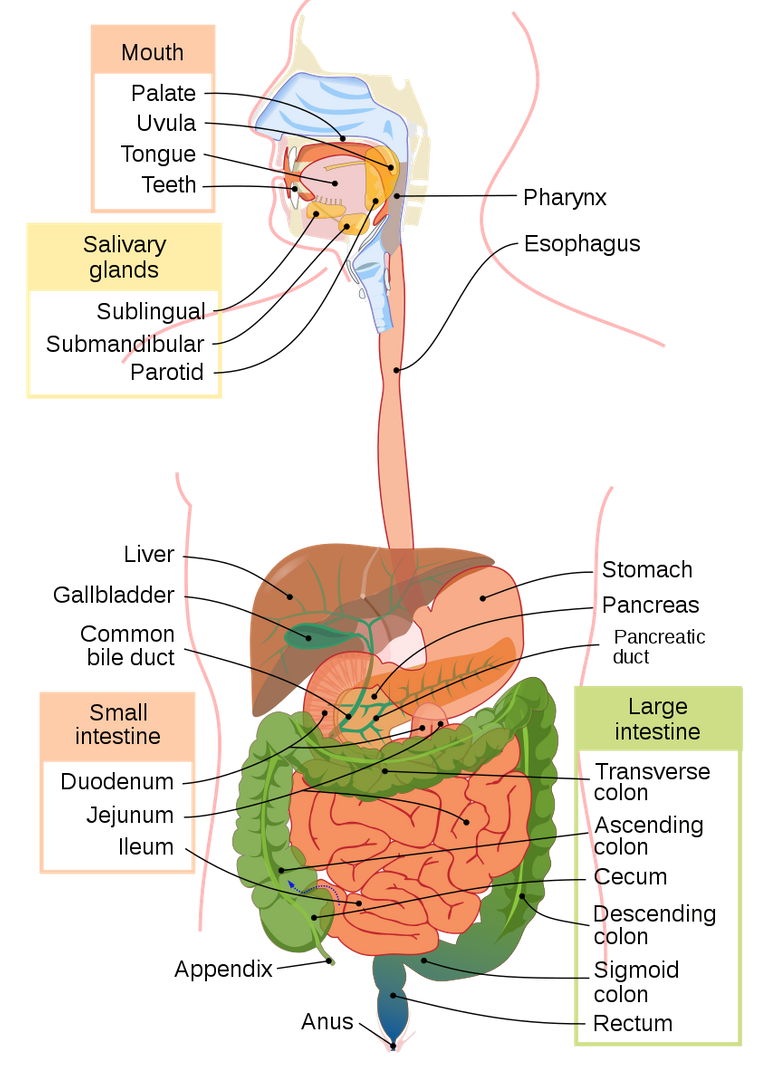
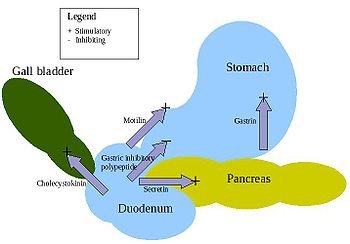
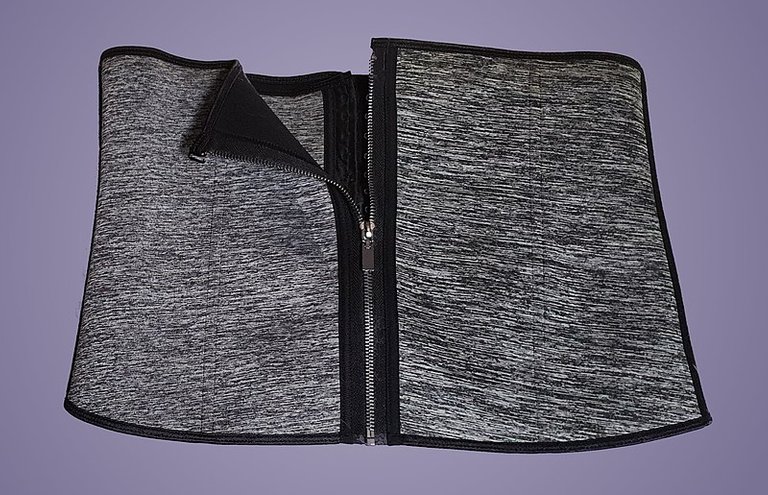
Hello @ciprianj,
Smashing article, as always! A question: people who are on maintenance steroid doses (therapeutic) tend to put on weight over time, even people on low doses. Why is that? Can that weight gain be modified by exercise/diet?
Thanks 😇
Hope you have a great week!
Yeah they add weight because steroids drugs are also the precursor for cholesterol and fat synthesis. Infact, they play significant role in fat production.
So it is not surprising to see them add in weight. But once the therapy is discontinued, by modifying their diets and regular exercise, they will definitely burn of the fats accumulated.
Do a have a lovely weekend too ❣️
Waist trainers are one of those scams by profit-seeking capitalists to defraud ignorant people, just like hair growth and penis enlargement creams.
Exactly my point.
They are always fond of using celebrities to promote their products.
Hi! Thanks again for this very instructive blog. I especially enjoy the cholesterol part, which I know will affect me at some point (at this is in my genes, somewhat).
I have so far a single question.
After reading the above paragraph, I was wondering whether there was a way to act directly on the adipose tissues themselves (instead that on cholesterol) to be able to lose weight without doing anything special? Apologies in advance for the stupid and naive question. Maybe this is something I didn’t get right. Thanks in advance for clarifications.
Have a nice end of the week!
Haha, sir, your questions are always on point. Never stupid ones as they even sometimes unveil areas I might have forgotten to elaborate.
On the question, let me make it clearer;
Adipocytes are scattered around the body at some strategic regions and not that they only store fat. They also play good role by assisting in body insulation against Cold or heat. They even also produce Very important hormones the body needs e.g angiotensin that is involved in blood pressure control.
It is logically right to think that by stopping their replicative ability, weight can be reduced. But this will only be possible through molecular approach through gene alteration (not so easy but not impossible).
But since, their replication only occurs when they have reached threshold in the storage of fats, by inhibiting or cutting off fat supply to it, they won't have need to replicate further and this still boils down to inhibiting fat or cholesterol synthesis.
Even if their replication is stopped and cholesterol synthesis continues, they will continue to build up in other parts of the body and most especially the liver. Infact, it will be a worst case scenario.
So quenching the source, solves the problem rather than quenching the product storage.
A beautiful weekend to you too sir 🥰
OK now it is clear. I thought it was much simpler bu I didn't think adipocytes could have additional functions. Therefore, the quote below says it all:
Thanks for enlightening me with so many details, and have a nice week-end!
Sometimes I ask myself what waist trainers were made for and the science behind it. It is just some marketing guy with no knowledge about anatomy, selling a product for the purpose of sweeping in money, to an overzealous customer who wants results.
That's why alot are just deceived easily into thinking that it works.
People can be gullible.
Congratulations @cyprianj! You have completed the following achievement on the Hive blockchain and have been rewarded with new badge(s):
Your next target is to reach 40000 upvotes.
You can view your badges on your board and compare yourself to others in the Ranking
If you no longer want to receive notifications, reply to this comment with the word
STOPCheck out the last post from @hivebuzz:
Support the HiveBuzz project. Vote for our proposal!
Thanks for your contribution to the STEMsocial community. Feel free to join us on discord to get to know the rest of us!
Please consider delegating to the @stemsocial account (85% of the curation rewards are returned).
Thanks for including @stemsocial as a beneficiary, which gives you stronger support.
The rewards earned on this comment will go directly to the person sharing the post on Twitter as long as they are registered with @poshtoken. Sign up at https://hiveposh.com.